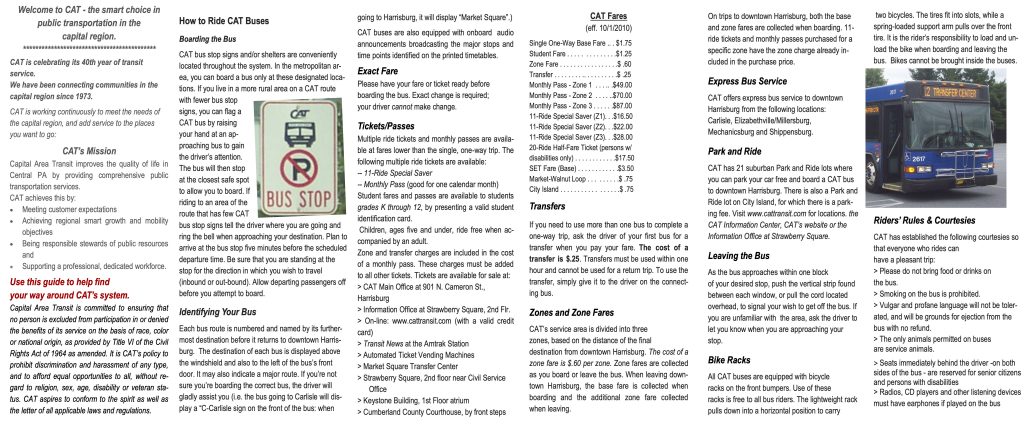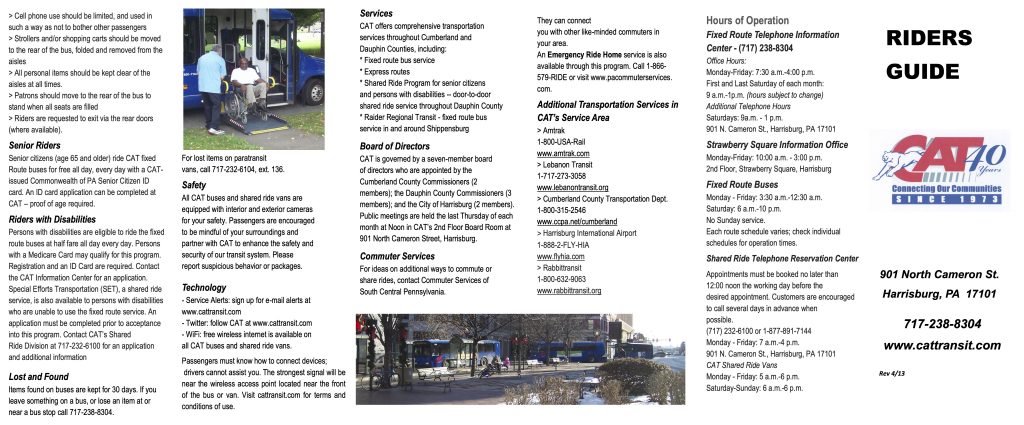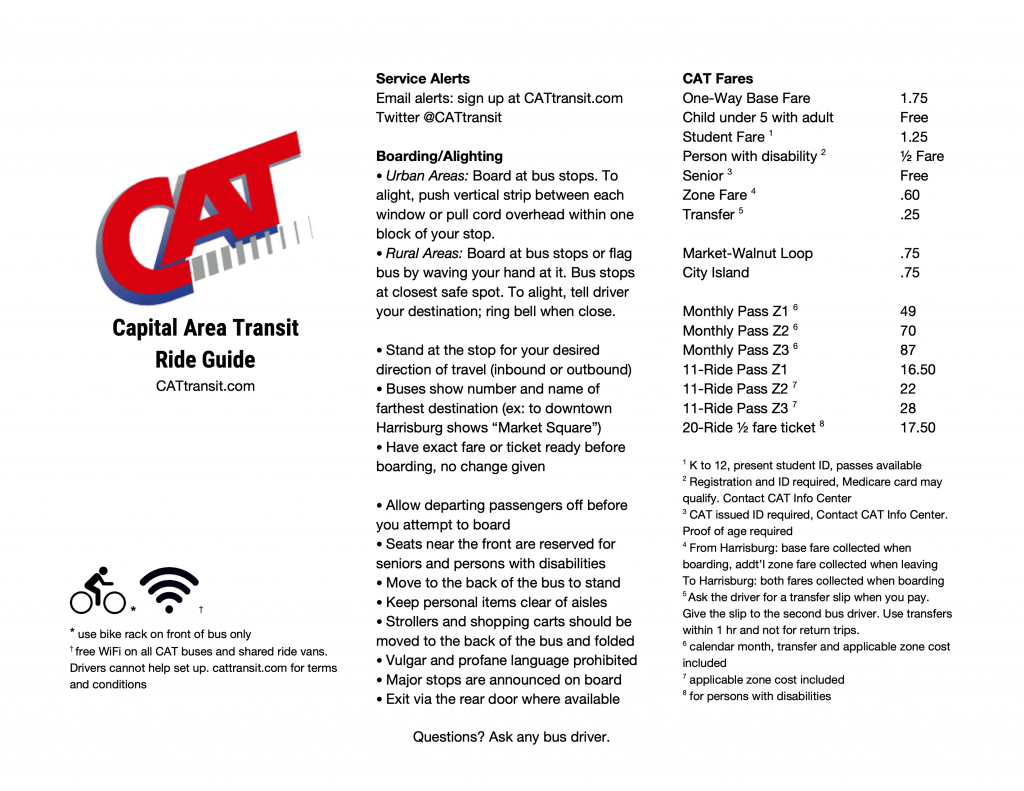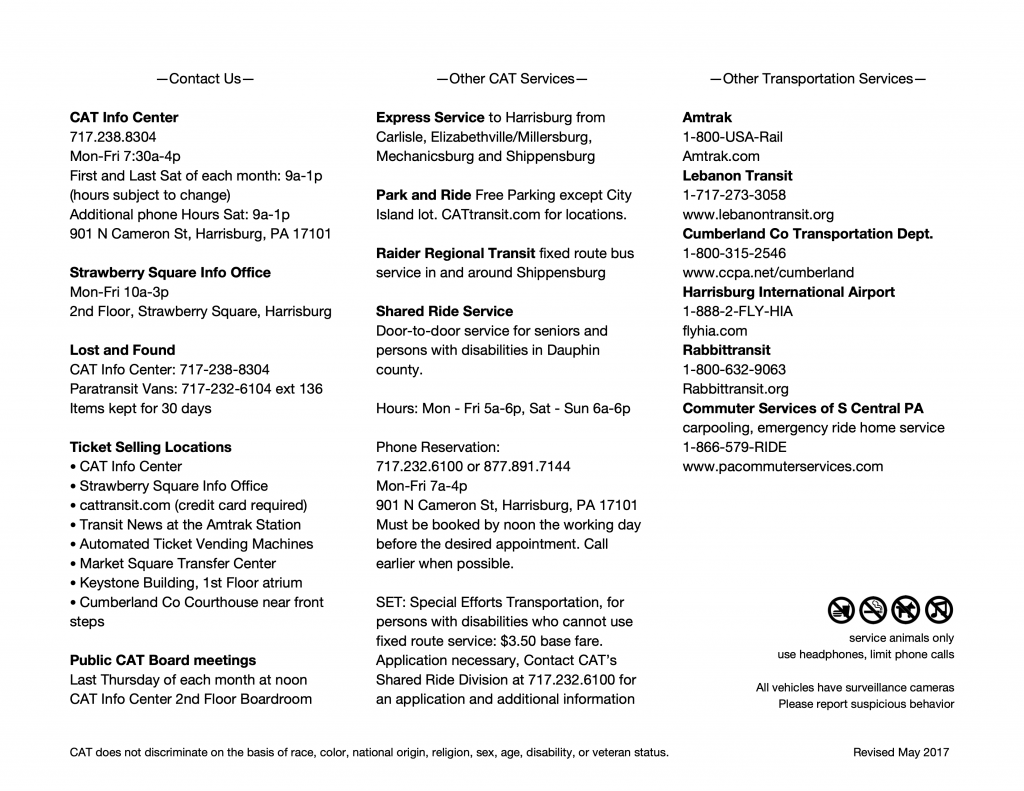individual independent project | 2017
created for use by Capital Area Transit
Harrisburg, Pennsylvania’s existing transit network suffers from confusing route patterns with many loops, detours, and paths through downtown, all of which change throughout the day. The route patterns are so complicated the data cannot be compiled into GTFS data for use in map applications, so riders must consult paper schedules and maps. The system has absolutely no service on Sunday, leaving transit users stranded for half of each weekend.
Existing network, as compiled from the CAT website
This project aims to stabilize the system with simplified routes running at standardized frequencies all day and through the weekend, including Sunday, without increasing operating costs. Whereas many other transit network redesigns are meant to concentrate service and increase frequency on main transit corridors, this plan solely increases the efficiency of the existing network, and uses this efficiency to standardize frequencies and spans. The potential increased ridership from this plan could be used to increase funding in the future to provide a small, truly frequent transit network.
Proposed network showing a simplified fare zone system
All currently-served areas retain service at levels near or far surpassing what exists today. Most trunks operate at 30 minute frequencies with hourly service on weekends. Certain trunks and most branches operate hourly on weekdays and less frequently on weekends, sometimes with only lifeline service. Long distance service to Carlisle, Shippensburg, Hershey, and Millersburg is maintained at service levels similar to what exists today.
Downtown, trunk routes would be consolidated onto the Walnut and Market St one-way pair, but in the future Market St could become a transit-only street and host all trunk routes in both directions. Transfers should be encouraged by allowing for free transfers and by scheduling pulses every half hour downtown.
Proposed route frequencies, compared to existing
Existing CAT User Guide
In the spirit of increasing efficiency, a simplified ride guide provides the same information as its larger, more verbose precursor, without overwhelming prospective riders.
New, synthesized CAT User Guide



